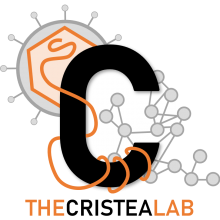A proteomic perspective of inbuilt viral protein regulation: pUL46 tegument protein is targeted for degradation by ICP0 during herpes simplex virus type 1 infection
Type
Much like the host cells they infect, viruses must also regulate their life cycles. Herpes simples virus type 1 (HSV-1), a prominent human pathogen, uses a promoter-rich genome in conjunction with multiple viral trans-activating factors. Following entry into host cells, the virion-associated outer tegument proteins pUL46 and pUL47 act to increase expression of viral immediate-early (α) genes, thereby helping initiate the infection life cycle. Because pUL46 has gone largely unstudied, we employed a hybrid mass spectrometry-based approach to determine how pUL46 exerts its functions during early stages of infection. For a spatio-temporal characterization of pUL46, time-lapse microscopy was performed in live cells to define its dynamic localization from 2 to 24 h postinfection. Next, pUL46-containing protein complexes were immunoaffinity purified during infection of human fibroblasts and analyzed by mass spectrometry to investigate virus-virus and virus-host interactions, as well as post-translational modifications. We demonstrated that pUL46 is heavily phosphorylated in at least 23 sites. One phosphorylation site matched the consensus 14-3-3 phospho-binding motif, consistent with our identification of 14-3-3 proteins and host and viral kinases as specific pUL46 interactions. Moreover, we determined that pUL46 specifically interacts with the viral E3 ubiquitin ligase ICP0. We demonstrated that pUL46 is partially degraded in a proteasome-mediated manner during infection, and that the catalytic activity of ICP0 is responsible for this degradation. This is the first evidence of a viral protein being targeted for degradation by another viral protein during HSV-1 infection. Together, these data indicate that pUL46 levels are tightly controlled and important for the temporal regulation of viral gene expression throughout the virus life cycle. The concept of a structural virion protein, pUL46, performing nonstructural roles is likely to reflect a theme common to many viruses, and a better understanding of these functions will be important for developing therapeutics.

